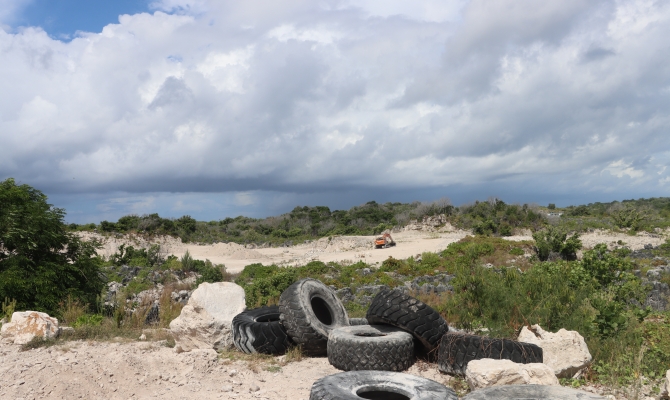
6 July 2024, Nauru – The Government of the Republic of Nauru is taking its future into its own hands, with the development of an ambitious plan for a transformational and managed migration of people living in vulnerable areas along the coastline to areas further inland, called the Higher Ground Initiative (HGI).
“Science and local knowledge had shown that the sea level is rising, and 80-90% of our communities live in areas along the coastline that are particularly vulnerable to this. The Government of Nauru has come up with an ambitious plan to relocate people to the top-side of the island away from the rising sea levels,” said Mr. Reagan Moses, Secretary of Department of Climate Change and National Resilience for the Government of Nauru.
“The Government has taken this on as its own initiative. Although it has been a real stress on the Government’s budget, we believe it is something that had to be done because if we don’t do it for ourselves, no one else will,” he said.
According to Secretary Moses, elements of adaptation are built into the HGI plans – from food security, water, infrastructure, and energy – and the Government is treating this as a pilot project that, if successful, can be used to show different adaptation options against climate change.
This comes at a timely juncture, when the country’s National Adaptation Plan is being developed to replace the existing Republic of Nauru Framework for Climate Change Adaptation and Disaster Risk Reduction (RoNAdapt) which was adopted in 2015 and was meant to be only for a period of five years.
“Times are changing, and the country’s priorities have changed from those that were in the RoNAdapt, which is why we need to develop this new National Adaptation Plan to reflect these changes,” Secretary Moses said.
“Some of the Government’s current adaptation priorities such as relocation and construction of new infrastructure due to sea level rise, water and food security, human and community development, will all be included in the NAP and some of these will be piloted with the HGI,” he said.
A series of workshops recently concluded in Nauru, which brought together stakeholders from government, the private sector, civil society, and communities for a consultative process to develop the NAP, incorporating views and ideas from different sectors and demographics to ensure a NAP that reflects the priorities of all Nauruans.
“It was important for us to have these consultations because everyone is different and has different priorities. By bringing these different thoughts together, we can create something that address all these different thoughts and priorities, and the communities that will be affected by the NAP will have a say on how it will be done,” he added.
The HGI was endorsed by Cabinet three years ago and was given a timeline of five years until completion. However, due to resource and funding constraints, there has been a delay in completing the project, but the Government is eager to put together a coalition of partners who will work together to fund it.
One of the funding mechanism that the Government is hoping to access climate financing from is the Green Climate Fund (GCF). Currently, Nauru does not have a Direct Access Entity to the GCF, which is something the current Nauru Readiness II Project is working to change.
“One of the deliverables of the Nauru Readiness II Project is getting Nauru ready to be a DAE so we hope that this will build a framework and strategy of how to do that through capacity building and other institutional support, especially for our Department of Finance,” Secretary Moses said.
“Before that, we wanted to first reach Delivery Partner status, as we feel that this will further build the capacity of our Finance department and will build the foundation and give us a taste of what to expect as a DAE,” he added.
A training workshop for the Readiness II project was also conducted this week, attended by staff from the Department of Climate Change and National Resilience, the Department of Finance and other stakeholders, which looked at how to develop effective concept notes for accessing climate financing from the GCF.
Mr. Laben Taldon of the Department of Finance was one of the participants, and said, “I hope that we have more trainings like this for capacity building so that we’ll be able to follow the processes required to access climate finance from the GCF to ensure that the development and continued progress of the HGI is embedded in project ideas.”
According to Secretary Reagan, the final plans for the HGI are nearing completion, after which the Government will be taking it out on a roadshow to promote the initiative in the hopes of bringing partners and donors on board to help rebuild Nauru.
For more information, please contact Ms. Filomena Nelson, at filomenan@sprep.org.